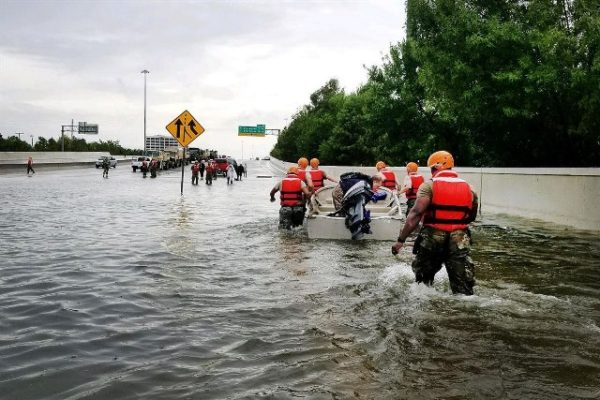
Severe weather events – such as hurricanes, blizzards, floods and fires — will become more common, climate experts predict. That means PR, marketing and corporate communications teams will need to incorporate weather into their crisis plans.
Like other crises, getting ready for severe weather means making a PR crisis plan that outlines how to communicate with the media, the public, and your team. A plan for natural disasters should also have backup options for power outages, temporary business closures, remote work, and internet disruptions.
When Contingency Plans are Essential
Adequate plans include back-up communication methods, including lists of cell phone and home phone numbers and alternative email addresses of key players. Plans also include arrangements for sending key team members to remote locations outside the potential disaster zone if possible.
Because many people have trouble getting to work during storms and other types of severe weather, it’s not just corporate PR departments that need crisis plans. PR service providers who monitor media, distribute news releases and complete other communications services also need contingency plans, experts say.
The need for a plan may seem obvious, but research indicates that many businesses lack written plans for managing weather-related crises, says Lisa Goldsberry at Axia Public Relations. A year after Hurricane Sandy pummeled New York City in 2012, most businesses still did not have any kind of plan.
“If you don’t plan ahead, it’s harder to bounce back,” Goldsberry says. “Communicating quickly is important, but you must first know what and how to communicate.”
PR teams often work around the clock to secure accurate storm information, facilitate interviews, monitor traditional and social media and update media and social channels. Staff members may become overworked during a natural disaster and may be preoccupied with their own homes and families.
Prioritize Your Team
Prioritize the health, safety and well-being of your team before anything else, recommends Carey Kirkpatrick, CEO and founder of communications firm CKP, in Forbes. Make sure your team members manage their own personal and safety needs during and after a disaster. Feel free to decline a media opportunity, especially if it would negatively affect your client or a team member’s personal safety or well-being, suggests Kirkpatrick, whose Houston-based PR firm worked through Hurricane Harvey.
“During Harvey, my team declined national media opportunities for both these reasons. And you know what? The opportunities waited for our clients,” she says.
Media measurement and benchmarking can indicate when it’s acceptable to pass on a media opportunity, points out Katie Paine, CEO of Paine Publishing. Most large organizations have a crisis communications plan, complete with a dark website ready to go live at any time and even a crisis newsroom on standby. “Smaller organizations typically lack such resources. But if they have a monitoring and measurement system in place, many valuable resources will already be at their fingertips,” Paine says.
Time to Pause Promotions
Social media posts not ordinarily deemed offensive may seem insensitive during a time of personal and community crisis. Posts that were previously scheduled with automated tools can deliver a PR black eye. Chick-fil-A, Burger King and others drew criticisms whey they promoted their products during the height of Hurricane Harvey.
“Those tone-deaf tweets were a big mistake,” says PR consultant Kara Alaimo in a Bloomberg article. “The most appropriate things for companies to do are to express sympathy and, ideally, offer aid to the victims.”
PR pros can identify ways their companies can help their community with donations of products, services or cash during or after the disaster. “Everyone has something to give, loan or share if they wish to do so,” Kirkpatrick remarks.
While PR teams can share helpful information, it’s critical to avoid spreading fake news reports. Social media hoaxes – like the Photoshopped image of a shark swimming in flooded Houston streets — tend to proliferate and spread quickly during disasters. Verify before retweeting. Be suspicious of news that seems outrageous or seems too good or too bad to be true. Learn the basic tricks on how to spot false news and doctored photos to verify information before retweeting.
Bottom Line: It’s now essential to include severe weather events in PR crisis communications plans. While plans for severe storms are similar to plans of other types of crises, they hold important differences. While PR teams manage corporate communications during natural disasters, they must often simultaneously manage problems facing their own homes and families.
This article was first published on the Glean.info blog.